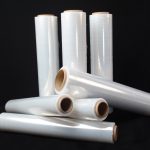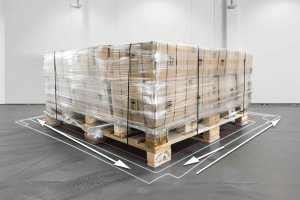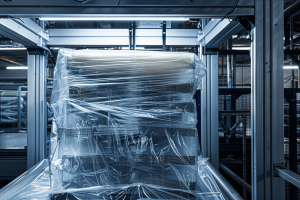
Not many of us know about the history of stretch wrap. In fact, stretch wrap is more important than you may think.
Just imagine sending a pallet of boxed items without stretch film covering them.
Although Stretch film is taken for granted most of the time, it is very important in solving many packaging and moving problems.
What exactly is stretch wrap film?
Stretch film is a highly stretchable plastic film that it is used to protect items. The plastic film keeps the items together.
Stretch film is usually used to divide pallet loads, but it is also used to tie smaller items. There are different types of stretch wrap, including:
- Bundling Stretch film
- Hand Stretch Film
- Extended Core Stretch Film
- Machine Stretch Film and
- Static Dissipative Film
There are two methods of producing stretch wrap:
Blown
It is a slower process because the resin is melted and extruded through an annular die. The quality is higher as well as the cost.
Cast
The process is quicker because the film is extruded through a slot die. The quality is not as good as blown but the cost is lower.
When choosing stretch film, one need to look for important things like cling, clarity, tear resistance, static discharge, etc.
History of Stretch Film
Stretch film is a new invention. With many companies claiming they are the inventors of stretch film, no one really knows the exact year of invention.
Why has stretch film become such a high demand? In fact, many companies had used their own stretching film to secure pallets and to transport large groups of boxes.
Stretch wrap then became more efficient than ever due to new materials and manufacturing process. In fact, one will be surprised how big the pallet wrap market is today.
It all began in the 1960s, when supermarkets gained popularity over local shopkeepers. As manufacturers started transporting large loads to warehouses, they needed to use pallets to move the products quickly and safely.
But companies also realized they were other benefits of using stretch film wrap to secure a pallet, such as wrapping products, protects them from dust, moisture and sunlight.
Moreover, there is also another benefit of using stretch wrap film — to act as a visual disguise for the products underneath, stopping tampering and theft.
In 1972, people realized that stretch film secure loads, and that’s when more and more companies started using different types of stretch wrap. The first ones were made from Low Density Polyethylene (LDPE) and Polyvinyl Chloride (PVC).
Even though PVC stretched more than LDPE, PVC was more likely to tear than LDPE. This was the main reason why companies decided to use LDPE rather than PVC.
By late 1970s, a new type of stretch wrap was created, the Linear Low Density Polyethylene (LLDPE). This was a huge improvement because it could stretch more, and its durability had also been increased. With LLDPE, no matter what type of load you had, it was safe as long as it was handled properly.
In the 1980s, there came another change. At this time triple layered film became the new standard. In the 1990s, it was increased to five layers. In the 2000s, the new standard was between seven and nine layers.
Pallet stretch films have come a long way in the last decade. Most impressive of all, now we are seeing nanotechnology.
Nanotechnology
What is Nanotechnology? It is the science that allows us the ability to manipulate individual atoms and molecules. Nano Stretch Film gives stretch film a plywood effect, which improves film performance.
There are many benefits in using Nano Stretch Film, such as:
- Less Cost at packaging
- More efficiency
- Transportation is more secure
- Less damages
- Environment friendly compared to non nano stretch films
As you can see, the technology used to create stretch film has improved in the last decade. Now we have different types of stretch wrap for different needs, ranging from the load size to the type of product you want to protect.
And trust us, with nanotechnology, more and more advanced stretch film will be invented in the near future!





